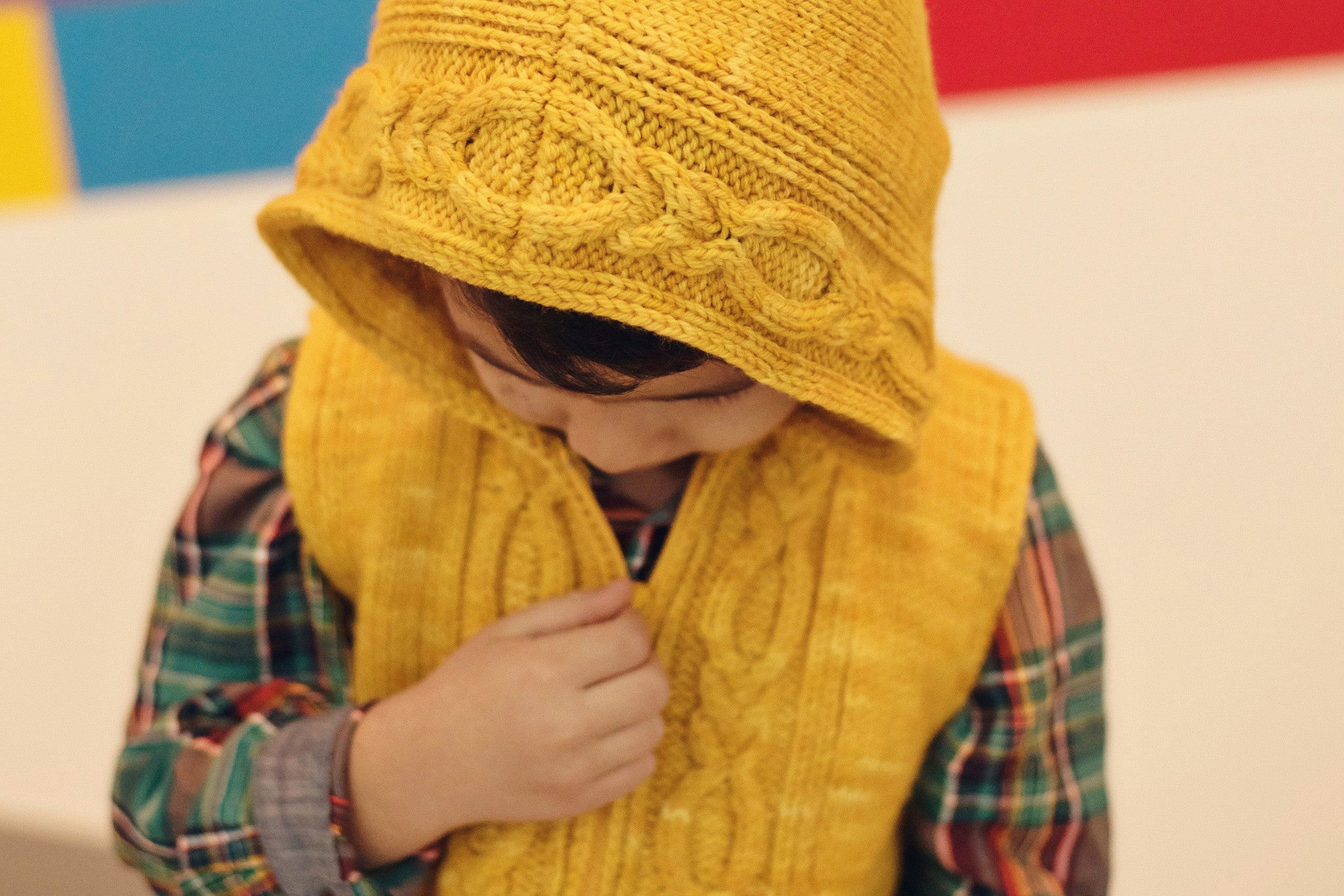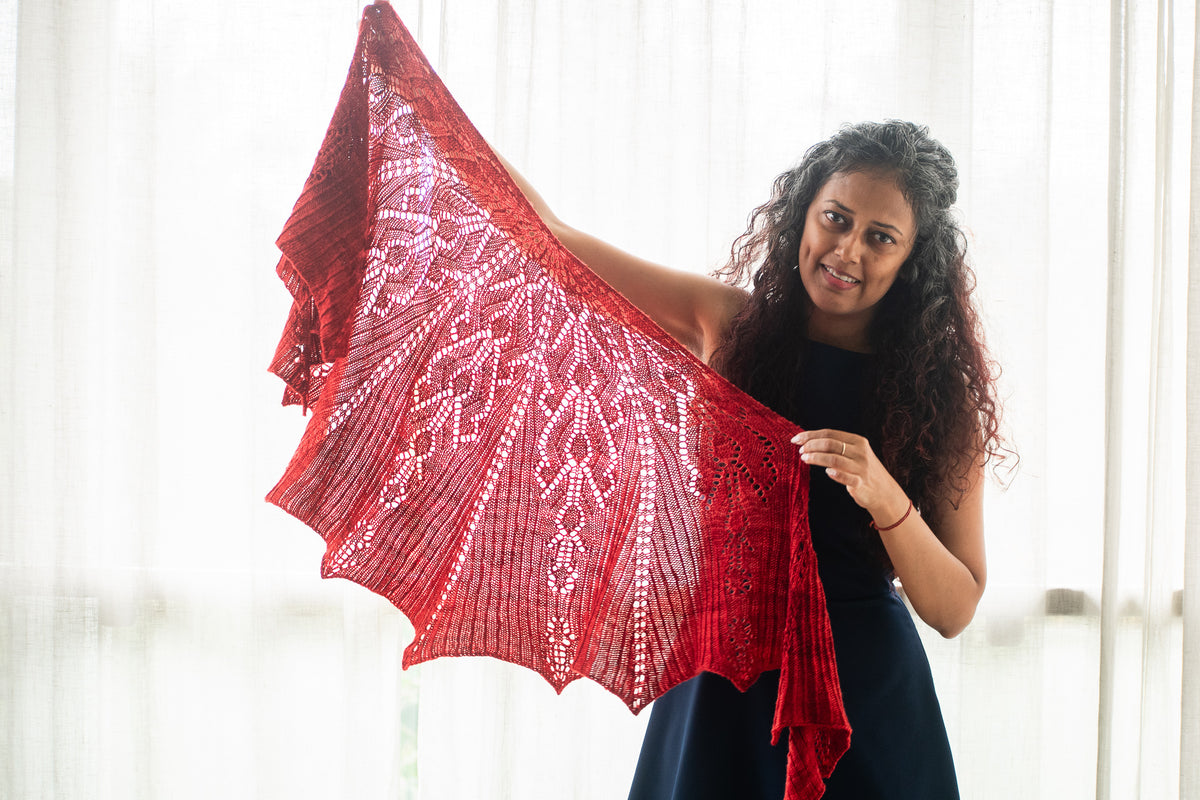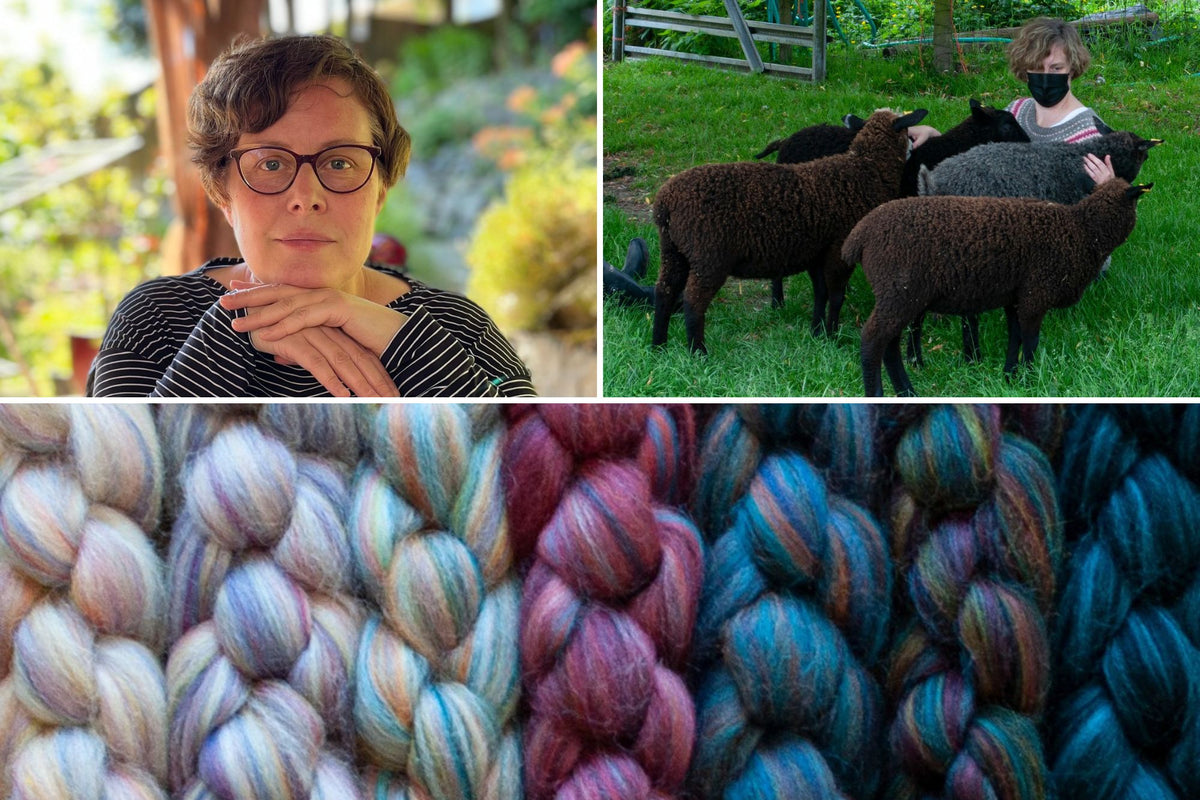How to sew a zipper into handknits

Above photo credit: Knittin' Little
I've recently designed two vest patterns that involve sewing a zipper into your hand-knit garment: Cabane à Sucre and Autumn Hike Hoodie. If you've never installed a zipper before, don't worry, this tutorial will walk you through each step of the process! It's not hard, but there are a few things you can do to make it easier and more professional looking.
1. Block your finished garment
If you haven't blocked your garment already, now is the time. If your knitting is going to stretch at all, you want it to do so before sewing in the zipper since the zipper will not stretch with the knitting.

Tip: I like to block 3-dimensional pieces like hoods as close to their finished shape as possible. Here I'm using a rolled up towel and pins to block the hood of the Autumn Hike Hoodie.
2. Gather all the supplies you'll need
You'll need:
- zipper prepared to the right length
- pins
- yarn needle
- sewing needle
- smooth waste yarn in contrasting colour
- sewing thread in contrasting colour
- sewing thread in matching colour
- scissors
I also recommend a flat surface to work on (like a table) in an area with good light, plenty of time so you won't feel rushed, and a nice cup of tea (or your beverage of choice!).
3. Baste front closed with contrasting yarn

Using yarn needle and smooth contrasting waste yarn, baste the two sides of the front shut. Don't pull too tight! You want the front edges to touch, but not overlap at all.

Inside of Autumn Hike Hoodie after basting. Note the nice "ditch" for the zipper to fit right into.
4. Pin zipper face down on inside of garment

Turn the garment inside out and with the zipper zipped up, line it up so that it's centered right between the two fronts. Pin zipper in place, using separate pins on either side of the zipper.
For the Autumn Hike Hoodie, there was a nice ditch that the zipper fit right into which made it easy to align. Another trick you can use is to make sure the zipper edges align with the same column of stitches all the way from bottom to top.
5. Remove the basting

Turn the garment right side out again and remove the basting. Check that everything looks good and that the bottom edges are aligned.
6. Unzip zipper and baste in place with contrasting thread

With sewing needle and contrasting thread, baste each half of the zipper in place. The stitches can be pretty large at this point and they don't have to be perfect. They just have to prevent the zipper from moving around. Remove pins. Zip zipper to make sure it still looks good.
7. Sew zipper in place using backstitch

Now, the moment you've been waiting for! After all that prep work, it's time to sew the zipper in place for real. With sewing needle and matching thread, sew each side of the zipper to your knit garment fairly close to the zipper teeth. Make sure to sew between knit stitches so that the seam is invisible from the right side. I prefer to use a backstitch here for strength and durability, but a running stitch could also work if you keep the stitches small.
8. Sew outside edges of zipper down

I used a running stitch here, but you could also use an overcast stitch. You just want to tack the edges down so that they don't pull away from the knit fabric. Fold down any excess fabric at the top of the zipper and tack this in place too. Remove the basting, zip up the zipper and admire your handiwork!

Note: For the Cabane à Sucre pattern, you could skip tacking the outside edges of the zipper down in step 8 since the zipper edges are covered with knit facings after the zipper is sewn in.
That's it! There are several methods for sewing zippers into hand-knits, but this is the one that I found works the best for me. It does take time, but after knitting a beautiful garment, I think it's worth it to take the time to make the zipper lie flat and even.
3 Réponses
Joanna
Thanks so much I feel quite confident now
Love the cable pattern in the tutorial, where can I buy the pattern for it please
Lynn
Thanks for the good instructions! I was apprehensive about putting a zipper in a pillow, but wanted it to be removable and washable. It turned out great!
Elena Nyhan
Thanks! That looks a lot easier than I had anticipated!
Laisser un commentaire
Voir l'article entier

Meet the Designer: Nidhi Kansal of knidhiknits





Elizabeth Sullivan
Auteur